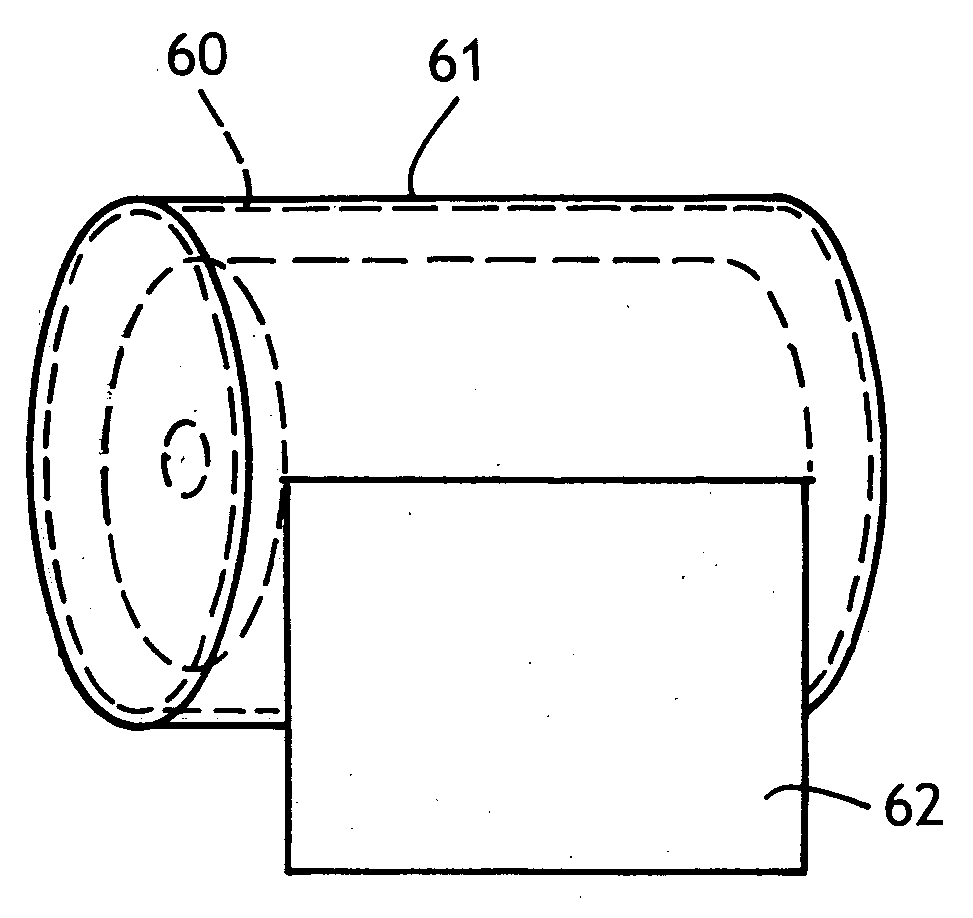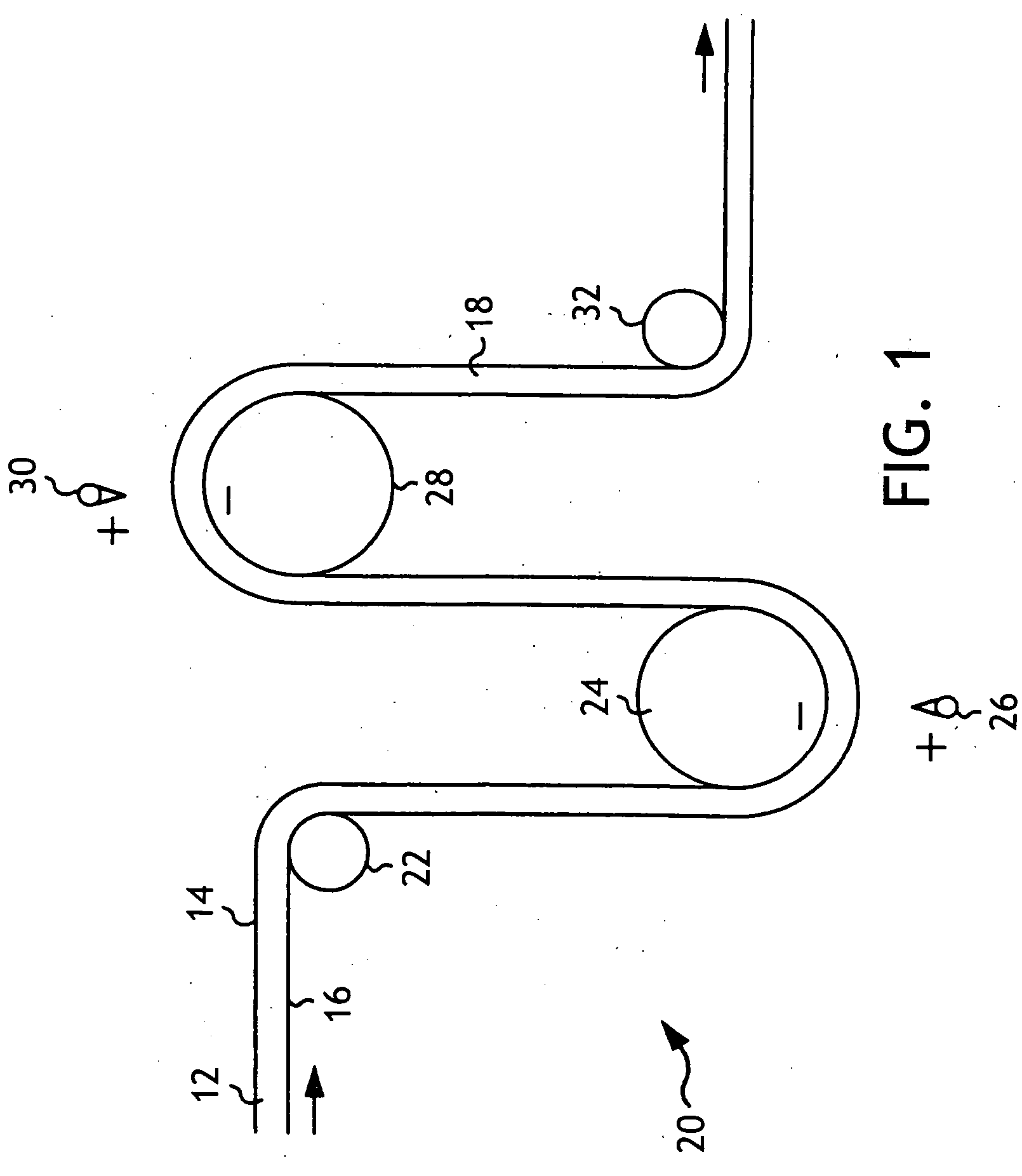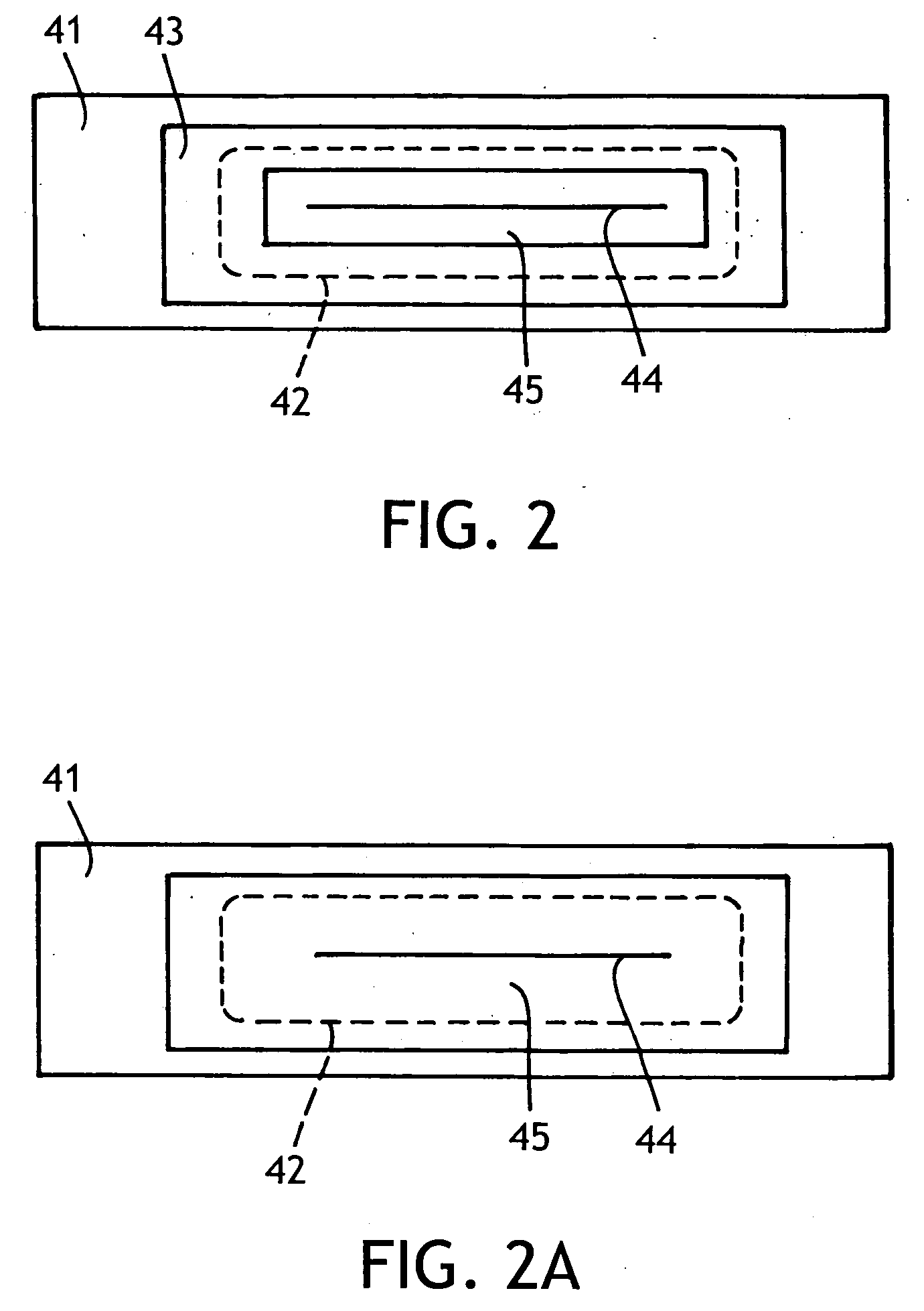Lint-reducing container
- Summary
- Abstract
- Description
- Claims
- Application Information
AI Technical Summary
Benefits of technology
Problems solved by technology
Method used
Image
Examples
example 1
[0039] A polypropylene point-bonded spunbond non-woven sheet having a basis weight of 1.25 ounces per square yard (osy) was electret charged using a pin-to-plate corona discharge in accord with the teachings of U.S. Pat. No. 6,365,088 B1 to Knight et al., previously mentioned and incorporated by reference. The charging voltage was +25 kV with a pin-to-plate spacing of 1.0 centimeter. The surface potential of the resulting sheet was 898 volts ±159 volts positive potential.
[0040] In order to prepare a tissue carton in accordance with this invention as illustrated in FIG. 2A, the tissue stack within a 275-count KLEENEX® family size tissue carton was carefully removed after tearing open the glued carton end flaps at one end of the carton. The plastic dispensing window was removed from the carton by finding a corner of the plastic window on the inside of the carton and gently pulling to detach the plastic window from the inside of the carton. Using double-sided tape, the inside perimete...
example 2
[0043] The comparative testing of Example 1 was repeated, except the electret-charged material of the carton of this invention was a polypropylene spunbond non-woven sheet having a basis weight of 0.5 ounces per square yard (osy) which was treated as described in Example 1. The surface potential of the resulting sheet was 58 volts±54 volts positive potential. As with Example 1, qualitative observations of each comparative test showed a reduction in the amount of dust and lint particles that landed on and around the carton of this invention as compared to the control.
example 3
[0044] A tissue carton as described in connection with Example 1 was tested with a number of different dispensing opening materials in order to quantify their relative effectiveness in reducing lint during dispensing. The materials included a “Control”, which was a 1 mil low-density polyethylene film. An untreated polypropylene film, designated “PP film”, was a 50 micron polypropylene film. An untreated polypropylene spunbond material, designated “PP SB”, was a 0.5 osy spunbond sheet. An electrostatically charged polypropylene film in accordance with this invention, designated “PP film charged”, was a charged 50 micron polypropylene film having a surface potential of 5662±1300 volts. An electrostatically charged polypropylene spunbond sheet in accordance with this invention, designated “PP SB charged” was a charged 0.5 osy spunbond sheet having a surface potential of 898±159 volts positive potential. An electrostatically charged polypropylene meltblown material in accordance with th...
PUM
 Login to View More
Login to View More Abstract
Description
Claims
Application Information
 Login to View More
Login to View More - R&D
- Intellectual Property
- Life Sciences
- Materials
- Tech Scout
- Unparalleled Data Quality
- Higher Quality Content
- 60% Fewer Hallucinations
Browse by: Latest US Patents, China's latest patents, Technical Efficacy Thesaurus, Application Domain, Technology Topic, Popular Technical Reports.
© 2025 PatSnap. All rights reserved.Legal|Privacy policy|Modern Slavery Act Transparency Statement|Sitemap|About US| Contact US: help@patsnap.com



